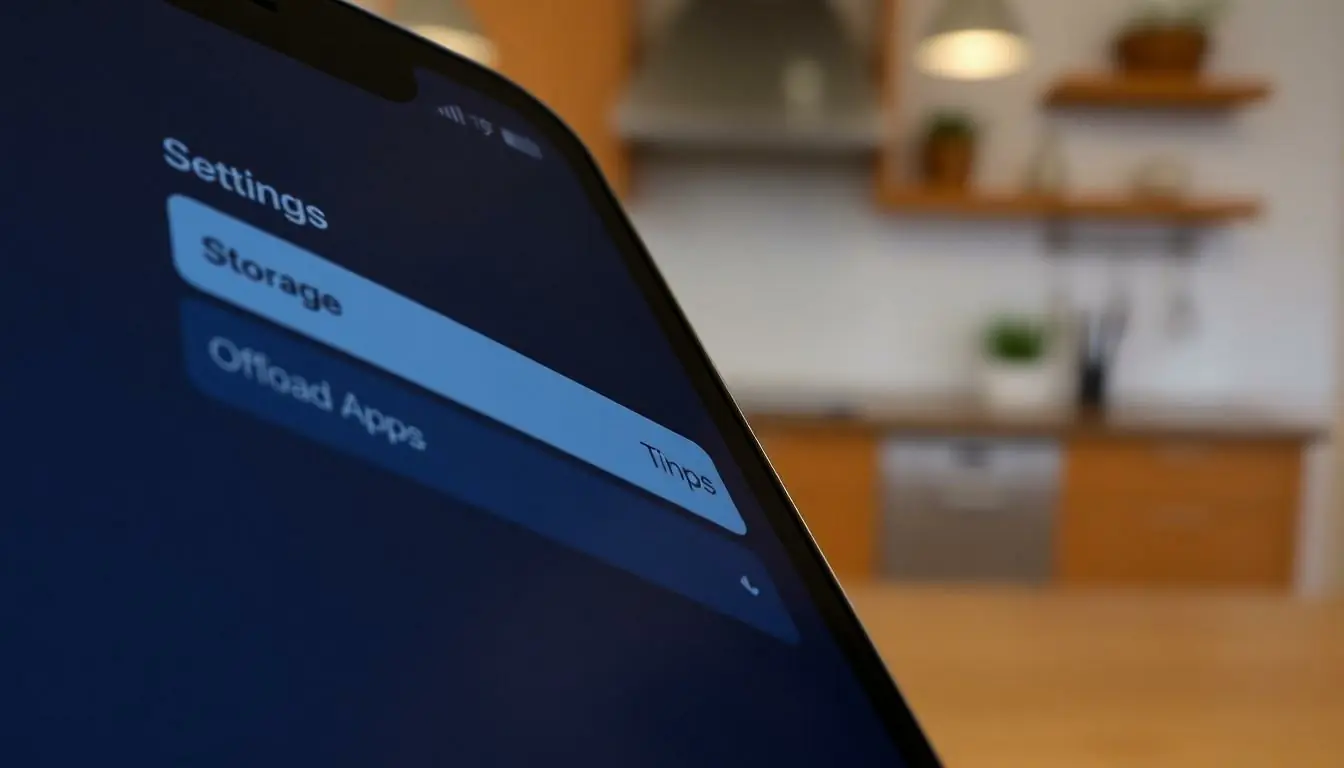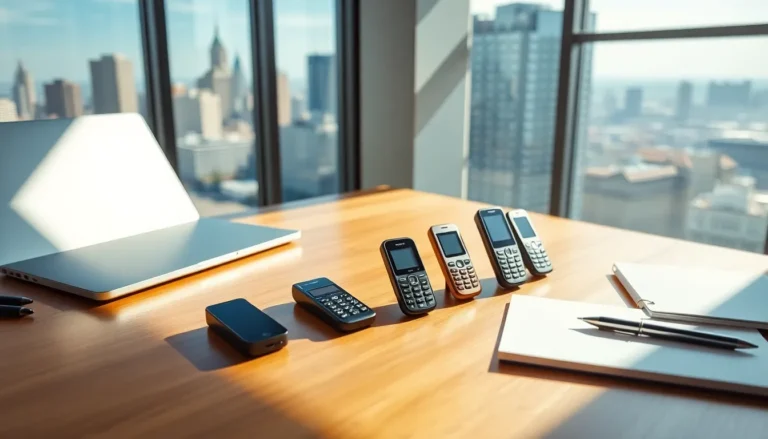Every iPhone user knows the struggle: apps slowing down, freezing up, or just acting plain weird. It’s like they’ve been partying too hard and need a detox. Clearing the cache is the magic trick that can bring those sluggish apps back to life. With just a few taps, users can reclaim precious storage space and restore their device’s snappy performance.
Table of Contents
ToggleUnderstanding Cache on iPhone
Cache plays a crucial role in app functionality on an iPhone. It acts as temporary data storage, saving information for quick retrieval.
What Is Cache?
Cache consists of files created by apps to speed up processes. These files include images, scripts, and other data types. Storing cached data allows apps to load faster and use fewer resources. App developers utilize cache to enhance user experience, ensuring tasks are seamless and efficient. However, excessive cache accumulation can lead to slow performance, necessitating routine maintenance.
Why Clear Cache?
Clearing cache improves an iPhone’s efficiency and responsiveness. Over time, cache files can grow large, consuming significant storage space. Users may notice slower app loading times or even freezing issues due to this buildup. Regularly clearing cache can prevent these problems and free up storage for new content. In addition, clearing cache often resolves glitches that disrupt the app experience. This simple action helps maintain optimal device performance and overall user satisfaction.
How to Clear Cache for Apps on iPhone

Clearing cache can significantly improve app performance on an iPhone. This section provides methods to efficiently do so.
Using the App Settings
Accessing app settings offers a straightforward way to clear cache. First, open the Settings app on the iPhone. Scroll down to find specific apps listed. Select the app you want to clear cache for. Tap on “Offload App” to remove the app while preserving its data, or choose “Delete App” to uninstall it entirely. Reinstall from the App Store afterward. Clearing cache through this method helps optimize the app’s storage.
Using the iPhone Storage Settings
Navigating through iPhone storage settings allows for broader management. Open the Settings app, then tap on “General.” From there, select “iPhone Storage.” This section displays a list of apps alongside the storage they occupy. Choose an app to see its details, where options like “Offload App” appear. Offloading removes the app but keeps its documents and data. This method helps reclaim storage and can lead to enhanced performance across multiple apps.
Tips for Managing Cache
Managing cache effectively enhances iPhone performance. Regular maintenance plays a crucial role in keeping apps running smoothly.
Regular Maintenance
Establish a routine for checking app cache. Schedule periodic reviews, ensuring that it doesn’t accumulate excessively. Users can go to Settings, select general storage, and identify apps with substantial cache storage. Prioritize apps that slow down performance or exhibit lag during use. Clearing cache regularly can lead to noticeable improvements in app function and speed. Setting reminders for maintenance keeps users aware of when action is needed.
Third-Party Apps to Help
Utilize third-party apps designed to manage cache efficiently. Numerous options are available on the App Store, offering tools to clear cache with ease. These apps typically provide user-friendly interfaces, allowing quick navigation and management. Some options include PhoneClean and Cleaner Pro, which perform cache clearing along with additional maintenance tasks. Users should research reviews and features to identify the best fit for personal needs. Employing these applications can streamline the cache management process and enhance overall performance on the iPhone.
Common Issues When Clearing Cache
Clearing cache can lead to several common issues for iPhone users. Understanding these issues helps in managing app performance effectively.
What to Expect After Clearing Cache
Users may notice apps loading slower immediately after clearing the cache. Temporary files are removed, which means the app needs to recreate cache data from scratch. Expect increased data usage on first launches, as the app reacquires stored data. Some users report logging out of apps, as cache often includes login credentials. New users may appreciate a fresh start, but returning users might find these interruptions inconvenient. Adjusting to the delay in speed might take time, but performance often improves once the cache rebuilds.
Troubleshooting Problems
Occasionally, issues arise that prevent cache clearing from functioning properly. If the option to clear cache is missing, users should check if the app has a built-in feature for this function, as not all apps allow cache management. Restarting the iPhone can resolve minor glitches hindering cache clearing. Reinstalling troublesome apps can also address persistent issues. Users might also experience slow performance if the device is running low on storage, so ensuring adequate available storage can help with cache performance.
Clearing cache on an iPhone is a simple yet effective way to enhance app performance and overall device efficiency. By regularly managing cache, users can prevent slow loading times and glitches that disrupt their experience. Establishing a routine for cache maintenance helps maintain optimal performance while keeping storage in check.
Utilizing built-in options or third-party apps can make the process even easier. Users should be mindful of potential temporary inconveniences following cache clearing but can enjoy improved responsiveness in the long run. Regular attention to cache management ensures that iPhone users can enjoy a smoother and more efficient experience with their apps.



